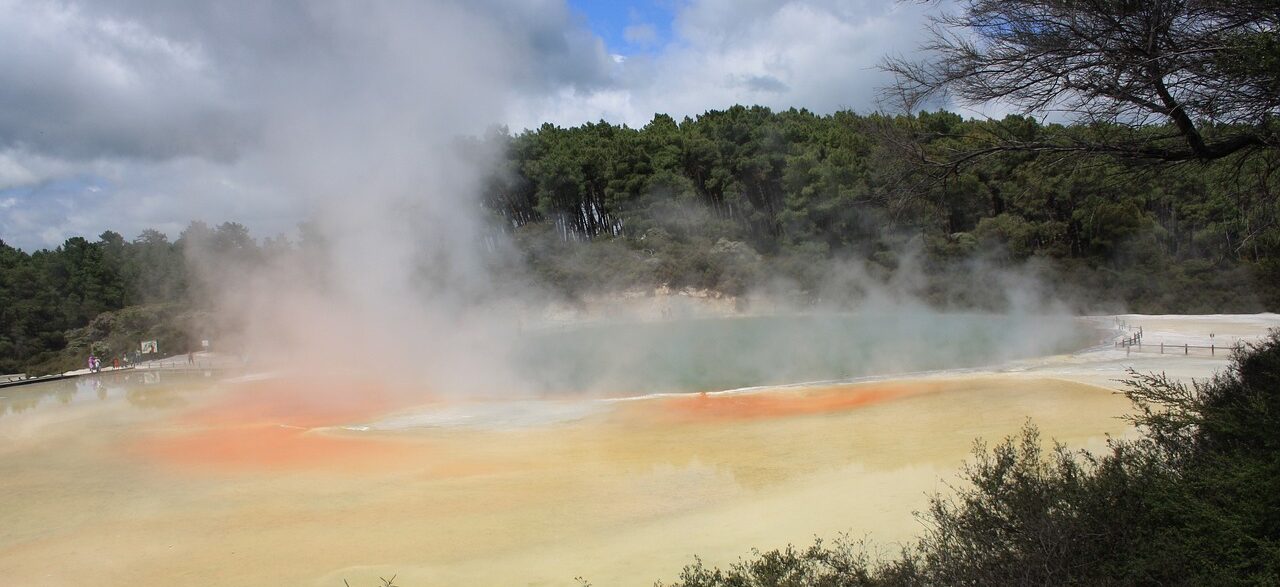Potential of Supercritical Geothermal Technology
Supercritical Geothermal Technology (SCGT) is a groundbreaking approach to renewable energy, pushing the limits of geothermal power generation by tapping into the Earth’s deepest and hottest regions. Unlike traditional geothermal methods, which typically drill to depths of around 3.5 kilometers, SCGT ventures much further, reaching depths of up to 6 kilometers or more. At these depths, conditions allow for the extraction of supercritical fluids, which exist at temperatures and pressures above their critical point, providing significantly higher energy output.
What Are Supercritical Fluids?
To understand SCGT, it’s essential to grasp the concept of supercritical fluids. These are substances heated and pressurized beyond their critical temperature and pressure, where they exhibit unique properties of both liquids and gases. For water, this supercritical state occurs at approximately 374°C (705°F) and 22.1 MPa (3,200 psi). In this state, supercritical water can diffuse through solids like a gas while dissolving materials like a liquid, making it an incredibly efficient medium for energy extraction.
How SCGT Works
SCGT involves a series of sophisticated steps to harness the power of supercritical fluids:
- Exploration and Site Selection: Identifying potential SCGT sites requires extensive geological surveys and advanced imaging technologies to locate areas with high geothermal activity. Regions known for volcanic activity are prime candidates for SCGT projects.
- Deep Drilling: Once a suitable site is identified, drilling begins. This process involves boring wells up to 6 kilometers deep into the Earth’s crust, reaching the supercritical zones where temperatures and pressures are ideal for extracting supercritical fluids.
- Extraction of Supercritical Fluids: At these extreme depths, water transitions into its supercritical state. Specialized equipment is used to bring these supercritical fluids to the surface. The high energy content of these fluids enables them to drive turbines more efficiently than traditional geothermal steam.
- Power Generation: The extracted supercritical fluids are used to generate electricity. Their high thermal energy content translates into increased efficiency and higher electricity output. This makes SCGT plants much more productive than conventional geothermal facilities.
- Reinjection and Sustainability: After the energy is extracted, the cooled fluids are reinjected into the Earth to help maintain reservoir pressure and ensure the sustainability of the geothermal resource. This closed-loop system minimizes environmental impact and maximizes long-term viability.
Advantages of SCGT
SCGT offers several compelling benefits:
- Increased Energy Density: Supercritical fluids have a higher energy density compared to subcritical fluids, leading to more electricity generation from the same volume of extracted fluid.
- Enhanced Efficiency: The unique properties of supercritical fluids enable more efficient heat transfer and conversion, reducing overall electricity production costs.
- Sustainability: By reinjecting cooled fluids, SCGT systems can maintain geothermal reservoir pressure, promoting sustainable energy extraction without depleting resources.
- Reduced Environmental Impact: SCGT has a smaller environmental footprint compared to fossil fuels, producing significantly fewer greenhouse gas emissions.
Global Implementation and Potential
Several countries with abundant geothermal resources are pioneering SCGT projects:
New Zealand: New Zealand, with its rich geothermal activity, is exploring SCGT in areas like the Taupō Volcanic Zone. This region’s geothermal potential makes it an ideal testing ground for advanced geothermal technologies.
United States: The US is investing heavily in SCGT, particularly in geothermal-rich western states. Projects such as the Frontier Observatory for Research in Geothermal Energy (FORGE) in Utah are leading the way in developing and deploying SCGT.
Iceland: Known for its extensive geothermal resources, Iceland is at the forefront of geothermal innovation. The country is actively researching SCGT to enhance its energy independence and provide a model for sustainable energy practices.
Challenges and Future Outlook
While SCGT holds immense potential, it faces several challenges. The technical difficulties of ultra-deep drilling and the high costs associated with such projects are significant barriers. High-pressure, high-temperature environments require advanced materials and engineering solutions to ensure safety and efficiency.
Additionally, managing supercritical geothermal reservoirs sustainably is crucial to prevent overexploitation and environmental degradation. Continuous research and technological advancements are essential to overcoming these challenges and fully realizing the potential of SCGT.
Supercritical Geothermal Technology represents a promising frontier in the quest for sustainable energy. By accessing the Earth’s supercritical zones, this technology can generate significant amounts of clean, renewable electricity, paving the way for a future less reliant on fossil fuels. As countries like New Zealand, the United States, and Iceland continue to explore and develop SCGT, the world moves closer to a sustainable and energy-efficient future.

